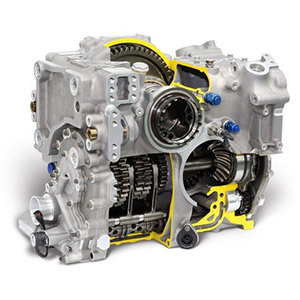R&D Tax Credit News

Hull & Knarr Shares Comment Letter on IRS’s Proposed Changes
November 21, 2023
In response to the IRS’s recently proposed changes to Form 6765, Credit for Increasing Research Activities, Hull & Knarr submitted comments to the IRS to provide feedback. In the letter below, Hull & Knarr requests that the IRS’s proposed changes to the Form be modified to simplify the compliance process for taxpayers claiming the research credit.
October 30, 2023
Electronic Submission (Feedback/Questions F6765)
RE: Comments regarding Proposed Changes to Federal Form 6765
To whom it may concern:
We are pleased to review the proposed changes to Form 6765, Credit for Increasing Research Activities, with the goal of following the compliance requirements for our clients and providing feedback to build a good incentive program. We address the following sections of the proposed form changes:
- A new Section E with five questions seeking miscellaneous information.
- A new Section F for reporting quantitative and qualitative information for each business component, required under Section 41 of the Internal Revenue Code.
- Moving the “reduced credit” election question and the “controlled groups or businesses under common control” question from line 17 and line 34 to the top of Form 6765.
- The IRS is also requesting feedback on whether Section F should be optional for certain taxpayers, including those:
- With Qualified Research Expenditures less than a certain dollar amount at a controlled group level,
- With a Research Credit less than a certain dollar amount at a controlled group level, or
- That are a Qualified Small Business for the Payroll Tax Credit.
New Section E:
We agree with these proposed additional questions. Regarding the number of business components on Line 45, we recommend that the IRS allow for grouping of like-components. Many of our clients conduct research across dozens or even hundreds of business components, and a grouping methodology would be more practical and manageable to reduce the number of business components.
New Section F:
- 50(c) – Business component’s descriptive name:
We have concerns regarding confidentiality of project information on this line item. The descriptive name may be classified information or otherwise confidential data that is not appropriate to put on a tax form. We recommend using a lettering or numbering system for listing the business components. Upon further request or audit, the taxpayer could provide the component names.
- 50(d) – Describe the information sought to be discovered and identify the one or more alternatives evaluated in the process of experimentation:
We request the IRS provide examples of appropriate answers that meet your requirements for this line item. For example, include the top 5 most common occurrences you anticipate. Some examples could be “determine the design of an upgraded X to enable Y results” or “determine the capability of Y in order to X”, or “determine a new process for automation of Z”. The examples should demonstrate the appropriate level of detail the IRS is seeking for compliance. We struggle with understanding the purpose of this requirement on a tax form. The information could be highly technical and would seem more appropriate in response to a request in an examination.
In addition, the form states to “use the space provided”, but we believe the space provided is not adequate. The requested examples would help demonstrate the appropriate length and space required for the response. Also, we recommend that you require only one of the alternatives evaluated to be listed. We would have no certainty as to whether the taxpayer provided every single alternative they applied in their process of experimentation and the list may be incomplete. Providing one alternative should be reasonable.
- 50(f) – Business component type:
We do not believe this distinction is necessary and could cause confusion and misinterpretation. For example, an invention could be a product; a technique could be a process. We recommend either this line item be eliminated or provides only three options, those being “product”, “process”, or “software”.
As discussed above in Section E, we recommend that the IRS allow grouping of business components for Section F. Grouping would allow a shorter list of business components and would provide taxpayers who have numerous business components a more manageable task. Some states currently allow business components to be grouped into like-components (such as Texas and Pennsylvania).
- Option 1 – Group the business components by product line or similar-type products; and/or
- Option 2 – Group the smallest business components (based on QRE amount) into one aggregated business component. We recommend that this option be considered if a taxpayer has more than 20 business components to list. The aggregated business component should not have QREs in excess of 5% of total QREs. For example, a taxpayer has 24 eligible business components with total QREs of $2 million. If the sum of the smallest 4 projects does not exceed QREs of $100,000 (5%), the taxpayer could combine those components into one group.
We recommend that the only required line items for this group be 50(a), 50(b), and 50(c). The business component name in Line 50(c) should be “All Other Minor Components”. The remaining line items (50(d)-50(h)) would be answered as “Not Applicable”, as it would be challenging to complete due to the multiple number of projects (for example, there may be both new and improved business components). Taxpayer would still complete amounts in lines 51-57. In addition, the QREs associated with these smaller business components may increase in subsequent years to then be included in the list of business components in the following year’s 6765.
Moving the “reduced credit” election question and the “controlled groups or businesses under common control” question from line 17 and line 34 to the top of Form 6765:
We agree with this proposed change.
Feedback on whether Section F should be optional for certain taxpayers:
- Research Credit less than a certain dollar amount at a controlled group level:
We recommend that Section F be optional for taxpayers with a research credit of less than $50,000. This would equate to roughly $1,000,000 or less of Qualified Research Expenditures and would likely be a company with only 10 to 15 employees.
Pros of a $50,000 credit limit:
-
- These smaller-sized companies do not have the bandwidth and resources to provide this amount of detail in the requested format.
- Smaller-sized companies typically cannot afford a sophisticated ERP system complete with project and supply tracking by business component.
Cons of a $50,000 credit limit:
-
- Larger taxpayers that may otherwise generate higher credits could strategically decrease their qualified research expenses and calculate a lower credit to not be subject to the requirements of Section F.
- Taxpayers might claim unsubstantiated credits if they limit it to below the $50,000 threshold.
- Qualified Small Businesses – Payroll Tax Credit:
We recommend that Section F be optional for qualified small businesses who qualify for the Payroll Tax Credit election. Per IRC Section 41(h)(3), a qualified small business is a taxpayer with gross receipts for the taxable year of less than $5,000,000. As with the justification for the credit limitation recommendation above, these small start-up businesses do not have the bandwidth at this early stage to provide the detailed information required. Most of the taxpayers electing this credit likely are not subject to income tax at this stage.
Pros of optional Section F for Qualified Small Businesses:
-
- These smaller-sized companies do not have the bandwidth to provide this amount of detail in the requested format. The cost/benefit of thoroughly documenting the research credit is high for these smaller taxpayers and may discourage such companies from claiming the credit.
- Start-up companies that are classified as qualified small businesses typically cannot afford a sophisticated ERP system complete with project and supply tracking by business component. Many of these taxpayers who elect the payroll tax offset are not yet generating revenue.
Cons of optional Section F for Qualified Small Businesses:
-
- Taxpayers might claim unsubstantiated credits.
- Year 6 of filing the research credit may be lacking documentation as their process for the first 5 years did not require the same level of business component detail.
- Other Recommendation –
We recommend that Section F be optional for eligible small businesses, as defined in IRC Section 38(c)(5)(A). An eligible small business is a corporation, partnership, or sole proprietorship with average annual gross receipts for the 3-taxable-year period preceding the tax year of $50 million or less. We recommend that eligible small businesses be excluded from the Section F requirement because these taxpayers may pay minimal income tax and not currently benefit from the research credit.
Pros of a $50 million gross receipts limit:
-
- Eligible small businesses generally do not have the bandwidth to provide the amount of detail in the requested format. The cost/benefit of thoroughly documenting the research credit is high for these taxpayers and may discourage such companies from claiming the credit.
- Eligible small businesses typically cannot afford a sophisticated ERP system complete with project and supply tracking by business component.
- Many eligible small businesses are passthrough entities. Individual shareholders often do not benefit from the credit as the limitation under IRC Section 41(g) is common. Section 41(g) provides that the amount of credit determined for any taxable year shall not exceed an amount (separately computed with respect to such person’s interest in such trade or business or entity) equal to the amount of tax attributable to that portion of a person’s taxable income which is allocable or apportionable to the person’s interest in such trade or business or entity.
Cons of a $50 million gross receipts limit.
-
- Eligible small business taxpayers might claim unsubstantiated credits.
- Ineligible credits might be claimed.
Hull & Knarr is a consulting firm that works with companies in a wide variety of industries across the country. With our extensive experience for over 20 years as a firm, we have been providing federal and state R&D incentive services to our clients. Our clients vary in size from start-up companies to Fortune 500 companies. Our professional staff, comprised primarily of Engineers and Accountants, uses judicious methods to ensure Research Tax Credit claims are accurate and supportable, strictly following IRS methodology and guidelines.
We appreciate your consideration of these comments and welcome the opportunity to discuss these issues further. If you have any questions regarding our submission, please contact Carlos Freitas cfreitas@hullandknarr.com or Amy Moon amoon@hullandknarr.com.
Featured Projects





